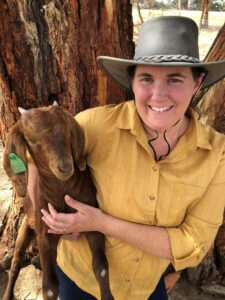Rural Australia is the backbone of the nation, contributing significantly to the country’s economy through agriculture, mining, and other rural industries. For those living in or operating businesses in these areas, securing financial assistance is often crucial to maintaining and expanding operations. Rural loans Australia are designed to meet these needs, offering tailored solutions that address the unique challenges faced by rural communities.
What are Rural Loans?
Rural loans are specialized financial products aimed at individuals, businesses, and organizations involved in agricultural activities or other rural enterprises. These loans are tailored to the specific needs of rural operations, taking into account factors like seasonal income fluctuations, land and equipment acquisition, and infrastructure development.
Unlike standard loans, rural loans often come with more flexible terms, including longer repayment periods and interest-only repayment options, which are essential for managing the cash flow of businesses that rely on seasonal production cycles.
Types of Rural Loans
In Australia, rural loans can be broadly categorized into several types, each designed to cater to different aspects of rural life and business:
- Agricultural Loans: These are the most common type of rural loans, providing financing for a wide range of agricultural activities. Whether you’re looking to purchase land, invest in new equipment, or expand your existing operations, agricultural loans offer the capital needed to achieve your goals.
- Farm Equipment Loans: Equipment is a significant investment for any farm. These loans are specifically designed to help farmers purchase new machinery or upgrade existing equipment, ensuring they have the tools necessary for efficient and productive operations.
- Land Loans: For those looking to purchase or expand their rural property, land loans offer a way to finance the acquisition. These loans can cover the purchase of farmland, grazing land, or other types of rural property. Click here to know more about Purchasing an Acreage Property.
- Livestock Loans: Livestock is a vital part of many rural businesses. Livestock loans provide the necessary funding to purchase animals, manage herds, or invest in breeding programs.
- Drought and Disaster Relief Loans: Australia’s rural areas are particularly vulnerable to natural disasters, including droughts, floods, and bushfires. These loans are designed to help rural businesses recover from such events, providing the financial support needed to rebuild and continue operations.
- Rural Business Loans: Not all rural loans are for farming. Rural business loans cater to other types of rural enterprises, such as tourism, retail, or service businesses operating in rural communities.
Key Features of Rural Loans
Rural loans Australia come with several key features that distinguish them from other types of loans. These features are designed to meet the unique challenges of rural life and business:
- Flexible Repayment Options: Given the seasonal nature of rural incomes, many rural loans offer flexible repayment terms. This might include interest-only periods, seasonal repayments, or the ability to make lump-sum payments after harvest or other income-generating periods.
- Competitive Interest Rates: Rural loans Australia often come with competitive interest rates, particularly if the loan is secured against rural property or equipment. Some lenders may also offer fixed-rate options, providing certainty in repayment amounts over the life of the loan.
- Government Support: The Australian government offers various grants, subsidies, and low-interest loans to support rural communities. These programs are often designed to help farmers manage cash flow, invest in infrastructure, or recover from natural disasters.
- Tailored Loan Structures: Each rural loan can be structured to meet the specific needs of the borrower. This includes tailored loan amounts, repayment terms, and interest rate options that align with the borrower’s financial situation and business goals.
Eligibility Criteria for Rural Loans
Eligibility for rural loans Australia varies depending on the type of loan and the lender’s requirements. However, some common criteria include:
- Residency: The borrower must be an Australian citizen or permanent resident.
- Business Type: The borrower should be engaged in agricultural activities or other rural businesses. Some lenders may have specific requirements regarding the type and scale of the business.
- Credit History: A good credit history is essential for securing a rural loan. Lenders will assess the borrower’s creditworthiness based on their credit score, financial history, and ability to repay the loan.
- Security: Many rural loans Australia are secured against property, equipment, or other assets. The value and type of security offered can influence the loan amount and interest rate.
- Business Plan: For larger loans, lenders may require a detailed business plan outlining how the funds will be used and how the business plans to repay the loan.
How to Apply for a Rural Loan
Applying for a rural loan in Australia involves several steps:
- Research and Compare Lenders: It’s essential to compare different lenders and loan products to find the one that best meets your needs. Consider factors like interest rates, loan terms, and any additional fees or charges.
- Prepare Documentation: Gather all necessary documentation, including proof of identity, financial statements, and details of the property or equipment being used as security.
- Submit an Application: Once you’ve chosen a lender, you can submit an application either online or in person. The application will typically require details about your business, financial situation, and the purpose of the loan.
- Loan Assessment: The lender will assess your application, which may involve a credit check, property valuation, and assessment of your business plan.
- Approval and Disbursement: If approved, the loan will be disbursed according to the terms agreed upon. This may involve a lump sum payment or staged payments depending on the loan type.
Choosing the Right Rural Loan
Choosing the right rural loan is crucial for the success of your rural business. Consider the following when making your decision:
- Loan Purpose: Clearly define the purpose of the loan and ensure the product you choose aligns with your goals.
- Repayment Terms: Look for repayment terms that match your income cycle. Flexibility is key, particularly for businesses with seasonal cash flow.
- Interest Rates: Compare interest rates across different lenders. Even a small difference in rates can have a significant impact on the overall cost of the loan.
- Government Programs: Explore any government programs that might offer better terms or additional support for your rural business.
Conclusion
Rural loans Australia are a lifeline for those living and working in rural communities. With the right loan, rural businesses can invest in their future, weather the challenges of rural life, and contribute to the nation’s prosperity. Whether you’re a farmer, a business owner, or someone looking to buy rural property, understanding the various rural loan options available can help you make informed decisions and achieve your financial goals.
For more detailed advice and tailored loan solutions, it’s always a good idea to consult with experts in rural finance, such as those at Rivendell Rural Finance, who can guide you through the complexities of securing the right loan for your needs.








